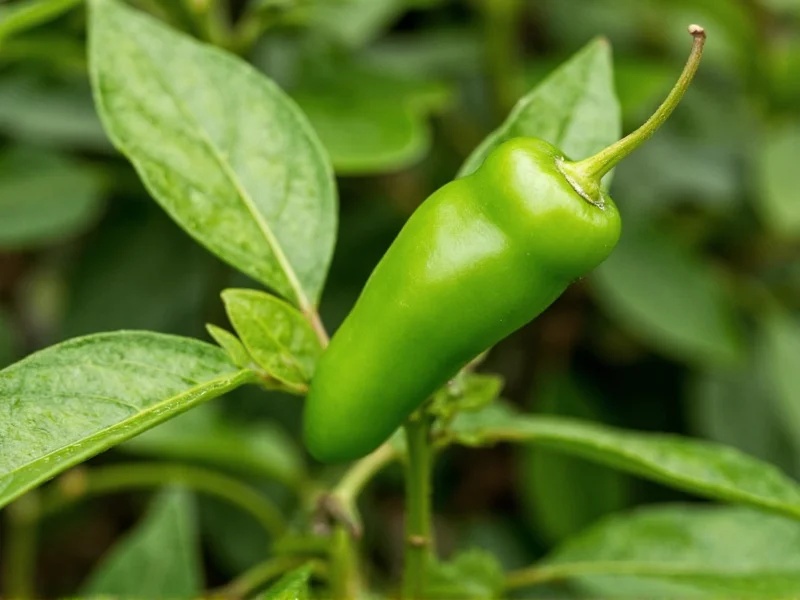The Scoville scale remains the standard measurement for chili pepper heat intensity, and understanding where jalapeños fall on this spectrum helps cooks, food enthusiasts, and🌶️ spice lovers make informed decisions about their culinary creations. While many people consider jalapeños relatively mild compared to hotter varieties, their heat level can vary significantly based on growing conditions, specific cultivar, and even individual pepper characteristics.
Understanding the Scoville Heat Unit System
Developed by pharmacist Wilbur Scoville in 1912, the Scoville Organoleptic Test originally measured pepper heat through human taste panels. Testers would dilute pepper extract in sugar water until the heat became undetectable, with the dilution factor determining the Scoville rating. A pepper rated at 5,000 SHU would require 5,000 parts of sugar water to neutralize the heat from one part of pepper extract.
Modern laboratories now use High-Performance Liquid Chromatography (HPLC) to measure capsaicinoids—the chemical compounds responsible for heat in peppers. This scientific method provides more precise measurements that are then converted to Scoville Heat Units for consumer understanding. Despite technological advances, the Scoville scale remains the most recognized measurement system for pepper heat worldwide.
Why Jalapeños Have a Range of Heat Levels
The 2,500-8,000 SHU range for jalapeños isn't arbitrary—it reflects genuine biological variation. Several factors influence where an individual jalapeño falls within this spectrum:
- Stress conditions: Peppers grown in drier, hotter conditions often develop higher capsaicin levels as a natural defense mechanism
- Ripeness: Red jalapeños (fully ripe) typically measure hotter than green ones
- Genetic variation: Different jalapeño cultivars have been bred for varying heat levels
- Position on plant: Peppers receiving more sunlight often develop more heat
- Seed and membrane concentration: The placenta (white ribs) and seeds contain the highest capsaicin concentration
Interestingly, the presence of white striations or “corking” (light-colored lines) on jalapeño skin often indicates higher stress during growth and typically correlates with increased heat levels. This visual cue helps consumers select peppers according to their preferred spice tolerance.
Comparing Jalapeño Heat to Other Common Peppers
Understanding jalapeño heat requires context. The following table shows how jalapeños compare to other popular peppers on the Scoville scale:
| Pepper Variety | Scoville Heat Units (SHU) | Heat Level Classification |
|---|---|---|
| Bell Pepper | 0 SHU | Mild |
| Pepperoncini | 100-500 SHU | Mild |
| Poblano | 1,000-2,000 SHU | Mild |
| Jalapeño | 2,500-8,000 SHU | Mild-Medium |
| Serrano | 10,000-23,000 SHU | Medium-Hot |
| Cayenne | 30,000-50,000 SHU | Hot |
| Habanero | 100,000-350,000 SHU | Very Hot |
| Ghost Pepper | 855,000-1,041,427 SHU | Extremely Hot |
This comparison shows that jalapeños sit comfortably in the middle range of commonly used culinary peppers. They're significantly hotter than poblanos but considerably milder than serranos, making them versatile for various recipes where moderate heat is desired. When exploring the jalapeno pepper scoville units range, it's important to recognize that even within this category, individual peppers can vary dramatically in heat intensity.
Practical Implications for Cooking and Consumption
Knowing the average scoville units for jalapeno helps home cooks and professional chefs adjust recipes appropriately. When working with fresh jalapeños, consider these practical tips:
- Taste testing: Before adding multiple peppers to a dish, taste a small piece of one pepper to gauge its heat level
- Seeding technique: Removing seeds and white membranes can reduce heat by up to 80% since capsaicin concentrates in these areas
- Heat distribution: Finely chopping distributes heat more evenly than large chunks
- Acid balance: Adding lime juice or vinegar can help counteract excessive heat
- Cooling agents: Dairy products like sour cream or yogurt contain casein that binds with capsaicin
For those sensitive to spice, understanding how hot are jalapenos on scoville scale helps manage expectations. The lower end of the jalapeño range (2,500 SHU) is only about 1/3 as hot as a mild cayenne pepper, while the upper end (8,000 SHU) approaches the lower threshold of serrano peppers. This knowledge proves valuable when substituting peppers in recipes or adjusting spice levels for different palates.
Common Misconceptions About Jalapeño Heat
Several myths persist about jalapeño heat levels and the Scoville scale:
- Myth: All jalapeños have the same heat level
Fact: Individual jalapeños from the same plant can vary significantly in heat due to micro-environmental factors - Myth: Red jalapeños are always hotter than green ones
Fact: While ripening generally increases heat, growing conditions play a larger role than color alone - Myth: The Scoville scale measures temperature
Fact: It measures chemical concentration (capsaicinoids), not thermal temperature - Myth: Refrigeration reduces pepper heat
Fact: Cold storage preserves capsaicin levels; heat perception may change due to numbing effect but SHU remains constant
Understanding these facts helps clarify why jalapeno heat level compared to other peppers can be somewhat unpredictable. The scoville scale measurement for fresh jalapenos provides a useful framework, but practical experience remains essential for managing heat in culinary applications.
Scientific Context of Capsaicin Measurement
The variation in jalapeño heat stems from their capsaicinoid profile—primarily capsaicin and dihydrocapsaicin. These compounds activate TRPV1 receptors in the mouth and skin, creating the burning sensation we perceive as “heap.” Modern HPLC testing reveals that jalapeños typically contain 0.01-0.04% capsaicin by weight, which translates to their 2,500-8,000 SHU range.
Researchers have identified that factors affecting jalapeno scoville rating include soil composition (particularly nitrogen levels), water stress, and sunlight exposure. Peppers grown with moderate water stress often develop higher capsaicin concentrations as a defense mechanism against predators. This explains why commercially grown jalapeños intended for mass consumption often fall toward the lower end of the heat spectrum, while artisanal or home-grown varieties might reach the higher thresholds.











 浙公网安备
33010002000092号
浙公网安备
33010002000092号 浙B2-20120091-4
浙B2-20120091-4